Instruction
Should you make your backswing shorter or longer?
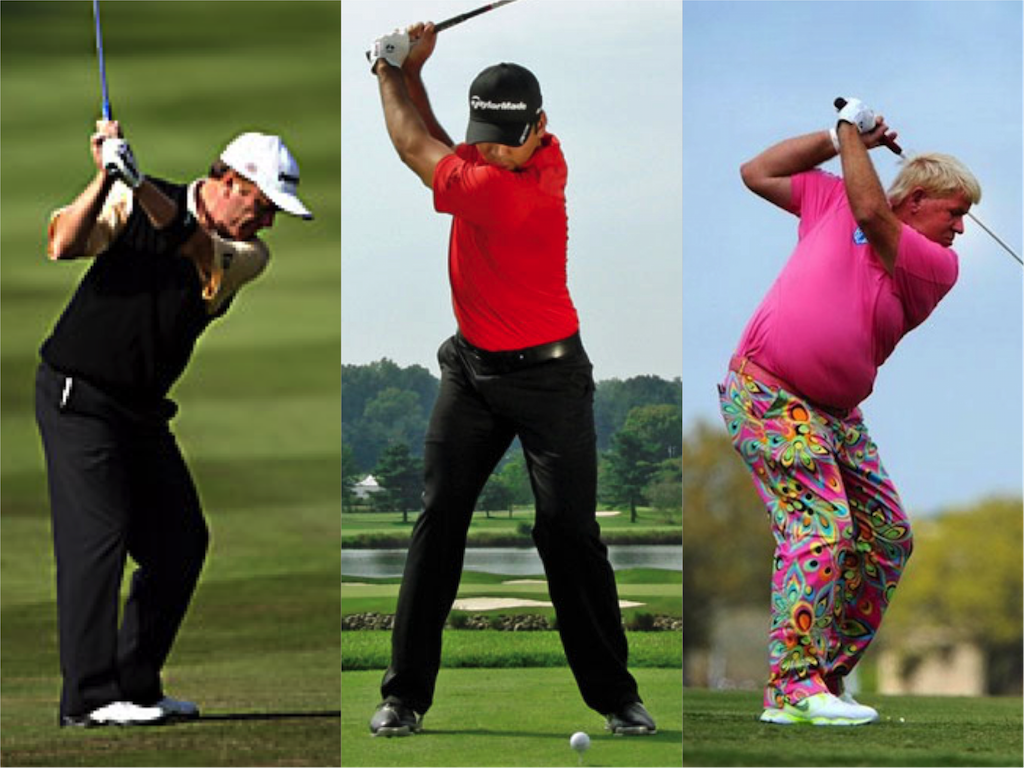
Your backswing length needs to produce enough speed to create the necessary distance, but also provide consistency for the most accurate shots possible. Sometimes golfers need more distance and other times they need more accuracy, and finding the happy medium isn’t always easy.
Obviously there is NO perfect backswing length for every golfer; if there was I would have told you by now! You certainly don’t want your backswing to be short and choppy, nor do you want to be long and loose. So how do you know what length is best for you?
In this article, I’ve demonstrated a short, medium and long backswing on Trackman so we can see what the data says about the three positions in regard to my swing.
Note: Individual golfers may find different results, so use these numbers as a guideline rather than a rule.
The Short Backswing
- Some of the best short-backswing players on Tour that you should watch on YouTube are John Cook, Liselotte Neumann and Jeff Sluman.
- With the driver, it’s easy to get too quick in your transition with a short backswing; thus, you must “wait” for it at the top.
- You must keep the right arm wide at the top for maximum swing width because when swinging this short you need to maximize your sources of power.
- Players with this type of swing need to have aggressive lower body transitions to “whip” the club through impact. Slow hip players need more swing length for necessary power.
- Make sure you stay “behind the ball” during your transition to help you hit up on the ball. If you move into the ball too much from here, you’ll chop down on it through impact.
- The club appears “laid off,” but in relation to a line drawn through the shoulder turn it is perpendicular — a perfect position.
The Normal Backswing
- Some of the best normal-backswing players on Tour you can view on YouTube are Greg Norman, Steve Elkington and Jason Day.
- A club in the “normal” position has reached about parallel to the ground and you can see that the shoulders have turned around 90 degrees.
- As the upper body turns, you must make sure that your foundation is solid or “receiving” the turn. Your weight should stay on the inside of your right foot at the top.
- The left shoulder will be a touch behind the ball in this position, allowing a fuller turn to the top. More distance should result.
- Based on the flexibility of the golfer, you might see a slight softening of the left arm at the top. There is a difference between soft and loose at the top — soft is good, loose is not.
- Be mindful of your clubface position at the top. Your left wrist position and how you grip the club will control whether the club face is open, square or closed at the top.
The Long Backswing
- Some of the best long-backswing players on Tour you should watch on YouTube are John Daly, Phil Mickelson and Tom Watson in his younger years.
- A longer backswing position requires a shoulder turn that is past 90 degrees and the lower body action accommodates that with a free turn to the top.
- You might see a left foot that comes off the ground with this player, a straightening right knee to the top and/or weight that moves slightly to the outside of the right foot.
- Be careful not to allow your arms to “droop” at this point in the swing. The right arm is still as wide as you can make it within reason.
- If you sway off the ball to any great degree with this longer swing, you will find it very hard to get back “to” the golf ball through impact.
- When the swing is this long, the club tends to move slightly across the line at the top due to the right arm leaving the body.
- Longer swings make it a touch easier to come over the top due to the more upright arm position.
Conclusion
- Look at the dispersion circles and you will see that the shorter backswing produced the tightest pattern.
- Except for one ball each, the normal and the long swing had about the same pattern, but the CARRY distances were quite different.
- The only issue I had with the longer swing was the inefficiency of contact due to it not being my normal motion, but the results weren’t too bad.
Clubhead Speeds
Short: 99.8 mph
Normal: 103.8 mph
Long: 107.7 mph
Ball Speeds
Short: 148.9 yards
Normal: 154.9 yards
Long: 157 yards
Carry
Short: 231.5 yards
Normal: 248.6 yards
Long: 256.8 yards
Total
Short: 261.3 yards
Normal: 273.2 yards
Long: 279.2 yards
*Trackman roll numbers replicate the conditions of PGA Tour fairways.
Side
Short: 6.3 yards
Normal: 16.4 yards
Long: 20.1 yards
It’s up to you to choose a shorter swing that finds more fairways or a longer swing than can add more distance. I’d suggest you find YOUR middle swing of the three and you will have good distance and quality accuracy in the end.
Instruction
The Wedge Guy: Beating the yips into submission

There may be no more painful affliction in golf than the “yips” – those uncontrollable and maddening little nervous twitches that prevent you from making a decent stroke on short putts. If you’ve never had them, consider yourself very fortunate (or possibly just very young). But I can assure you that when your most treacherous and feared golf shot is not the 195 yard approach over water with a quartering headwind…not the extra tight fairway with water left and sand right…not the soft bunker shot to a downhill pin with water on the other side…No, when your most feared shot is the remaining 2- 4-foot putt after hitting a great approach, recovery or lag putt, it makes the game almost painful.
And I’ve been fighting the yips (again) for a while now. It’s a recurring nightmare that has haunted me most of my adult life. I even had the yips when I was in my 20s, but I’ve beat them into submission off and on most of my adult life. But just recently, that nasty virus came to life once again. My lag putting has been very good, but when I get over one of those “you should make this” length putts, the entire nervous system seems to go haywire. I make great practice strokes, and then the most pitiful short-stroke or jab at the ball you can imagine. Sheesh.
But I’m a traditionalist, and do not look toward the long putter, belly putter, cross-hand, claw or other variation as the solution. My approach is to beat those damn yips into submission some other way. Here’s what I’m doing that is working pretty well, and I offer it to all of you who might have a similar affliction on the greens.
When you are over a short putt, forget the practice strokes…you want your natural eye-hand coordination to be unhindered by mechanics. Address your putt and take a good look at the hole, and back to the putter to ensure good alignment. Lighten your right hand grip on the putter and make sure that only the fingertips are in contact with the grip, to prevent you from getting to tight.
Then, take a long, long look at the hole to fill your entire mind and senses with the target. When you bring your head/eyes back to the ball, try to make a smooth, immediate move right into your backstroke — not even a second pause — and then let your hands and putter track right back together right back to where you were looking — the HOLE! Seeing the putter make contact with the ball, preferably even the forward edge of the ball – the side near the hole.
For me, this is working, but I am asking all of you to chime in with your own “home remedies” for the most aggravating and senseless of all golf maladies. It never hurts to have more to fall back on!
Instruction
Looking for a good golf instructor? Use this checklist

Over the last couple of decades, golf has become much more science-based. We measure swing speed, smash factor, angle of attack, strokes gained, and many other metrics that can really help golfers improve. But I often wonder if the advancement of golf’s “hard” sciences comes at the expense of the “soft” sciences.
Take, for example, golf instruction. Good golf instruction requires understanding swing mechanics and ball flight. But let’s take that as a given for PGA instructors. The other factors that make an instructor effective can be evaluated by social science, rather than launch monitors.
If you are a recreational golfer looking for a golf instructor, here are my top three points to consider.
1. Cultural mindset
What is “cultural mindset? To social scientists, it means whether a culture of genius or a culture of learning exists. In a golf instruction context, that may mean whether the teacher communicates a message that golf ability is something innate (you either have it or you don’t), or whether golf ability is something that can be learned. You want the latter!
It may sound obvious to suggest that you find a golf instructor who thinks you can improve, but my research suggests that it isn’t a given. In a large sample study of golf instructors, I found that when it came to recreational golfers, there was a wide range of belief systems. Some instructors strongly believed recreational golfers could improve through lessons. while others strongly believed they could not. And those beliefs manifested in the instructor’s feedback given to a student and the culture created for players.
2. Coping and self-modeling can beat role-modeling
Swing analysis technology is often preloaded with swings of PGA and LPGA Tour players. The swings of elite players are intended to be used for comparative purposes with golfers taking lessons. What social science tells us is that for novice and non-expert golfers, comparing swings to tour professionals can have the opposite effect of that intended. If you fit into the novice or non-expert category of golfer, you will learn more and be more motivated to change if you see yourself making a ‘better’ swing (self-modeling) or seeing your swing compared to a similar other (a coping model). Stay away from instructors who want to compare your swing with that of a tour player.
3. Learning theory basics
It is not a sexy selling point, but learning is a process, and that process is incremental – particularly for recreational adult players. Social science helps us understand this element of golf instruction. A good instructor will take learning slowly. He or she will give you just about enough information that challenges you, but is still manageable. The artful instructor will take time to decide what that one or two learning points are before jumping in to make full-scale swing changes. If the instructor moves too fast, you will probably leave the lesson with an arm’s length of swing thoughts and not really know which to focus on.
As an instructor, I develop a priority list of changes I want to make in a player’s technique. We then patiently and gradually work through that list. Beware of instructors who give you more than you can chew.
So if you are in the market for golf instruction, I encourage you to look beyond the X’s and O’s to find the right match!
Instruction
What Lottie Woad’s stunning debut win teaches every golfer

Most pros take months, even years, to win their first tournament. Lottie Woad needed exactly four days.
The 21-year-old from Surrey shot 21-under 267 at Dundonald Links to win the ISPS Handa Women’s Scottish Open by three shots — in her very first event as a professional. She’s only the third player in LPGA history to accomplish this feat, joining Rose Zhang (2023) and Beverly Hanson (1951).
But here’s what caught my attention as a coach: Woad didn’t win through miraculous putting or bombing 300-yard drives. She won through relentless precision and unshakeable composure. After watching her performance unfold, I’m convinced every golfer — from weekend warriors to scratch players — can steal pages from her playbook.
Precision Beats Power (And It’s Not Even Close)
Forget the driving contests. Woad proved that finding greens matters more than finding distance.
What Woad did:
• Hit it straight, hit it solid, give yourself chances
• Aimed for the fat parts of greens instead of chasing pins
• Let her putting do the talking after hitting safe targets
• As she said, “Everyone was chasing me today, and managed to maintain the lead and played really nicely down the stretch and hit a lot of good shots”
Why most golfers mess this up:
• They see a pin tucked behind a bunker and grab one more club to “go right at it”
• Distance becomes more important than accuracy
• They try to be heroic instead of smart
ACTION ITEM: For your next 10 rounds, aim for the center of every green regardless of pin position. Track your greens in regulation and watch your scores drop before your swing changes.
The Putter That Stayed Cool Under Fire
Woad started the final round two shots clear and immediately applied pressure with birdies at the 2nd and 3rd holes. When South Korea’s Hyo Joo Kim mounted a charge and reached 20-under with a birdie at the 14th, Woad didn’t panic.
How she responded to pressure:
• Fired back with consecutive birdies at the 13th and 14th
• Watched Kim stumble with back-to-back bogeys
• Capped it with her fifth birdie of the day at the par-5 18th
• Stayed patient when others pressed, pressed when others cracked
What amateurs do wrong:
• Get conservative when they should be aggressive
• Try to force magic when steady play would win
• Panic when someone else makes a move
ACTION ITEM: Practice your 3-6 foot putts for 15 minutes after every range session. Woad’s putting wasn’t spectacular—it was reliable. Make the putts you should make.
Course Management 101: Play Your Game, Not the Course’s Game
Woad admitted she couldn’t see many scoreboards during the final round, but it didn’t matter. She stuck to her game plan regardless of what others were doing.
Her mental approach:
• Focused on her process, not the competition
• Drew on past pressure situations (Augusta National Women’s Amateur win)
• As she said, “That was the biggest tournament I played in at the time and was kind of my big win. So definitely felt the pressure of it more there, and I felt like all those experiences helped me with this”
Her physical execution:
• 270-yard drives (nothing flashy)
• Methodical iron play
• Steady putting
• Everything effective, nothing spectacular
ACTION ITEM: Create a yardage book for your home course. Know your distances to every pin, every hazard, every landing area. Stick to your plan no matter what your playing partners are doing.
Mental Toughness Isn’t Born, It’s Built
The most impressive part of Woad’s win? She genuinely didn’t expect it: “I definitely wasn’t expecting to win my first event as a pro, but I knew I was playing well, and I was hoping to contend.”
Her winning mindset:
• Didn’t put winning pressure on herself
• Focused on playing well and contending
• Made winning a byproduct of a good process
• Built confidence through recent experiences:
- Won the Women’s Irish Open as an amateur
- Missed a playoff by one shot at the Evian Championship
- Each experience prepared her for the next
What this means for you:
• Stop trying to shoot career rounds every time you tee up
• Focus on executing your pre-shot routine
• Commit to every shot
• Stay present in the moment
ACTION ITEM: Before each round, set process goals instead of score goals. Example: “I will take three practice swings before every shot” or “I will pick a specific target for every shot.” Let your score be the result, not the focus.
The Real Lesson
Woad collected $300,000 for her first professional victory, but the real prize was proving that fundamentals still work at golf’s highest level. She didn’t reinvent the game — she simply executed the basics better than everyone else that week.
The fundamentals that won:
• Hit more fairways
• Find more greens
• Make the putts you should make
• Stay patient under pressure
That’s something every golfer can do, regardless of handicap. Lottie Woad just showed us it’s still the winning formula.
FINAL ACTION ITEM: Pick one of the four action items above and commit to it for the next month. Master one fundamental before moving to the next. That’s how champions are built.
PGA Professional Brendon Elliott is an award-winning coach and golf writer. You can check out his writing work and learn more about him by visiting BEAGOLFER.golf and OneMoreRollGolf.com. Also, check out “The Starter” on RG.org each Monday.
Editor’s note: Brendon shares his nearly 30 years of experience in the game with GolfWRX readers through his ongoing tip series. He looks forward to providing valuable insights and advice to help golfers improve their game. Stay tuned for more Tips!

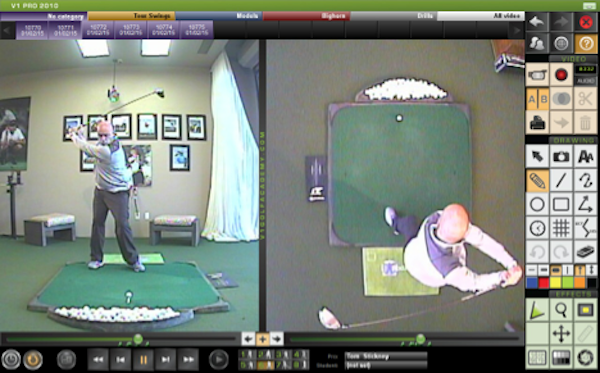
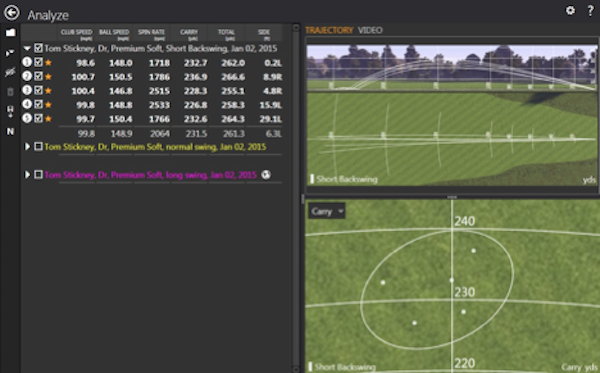






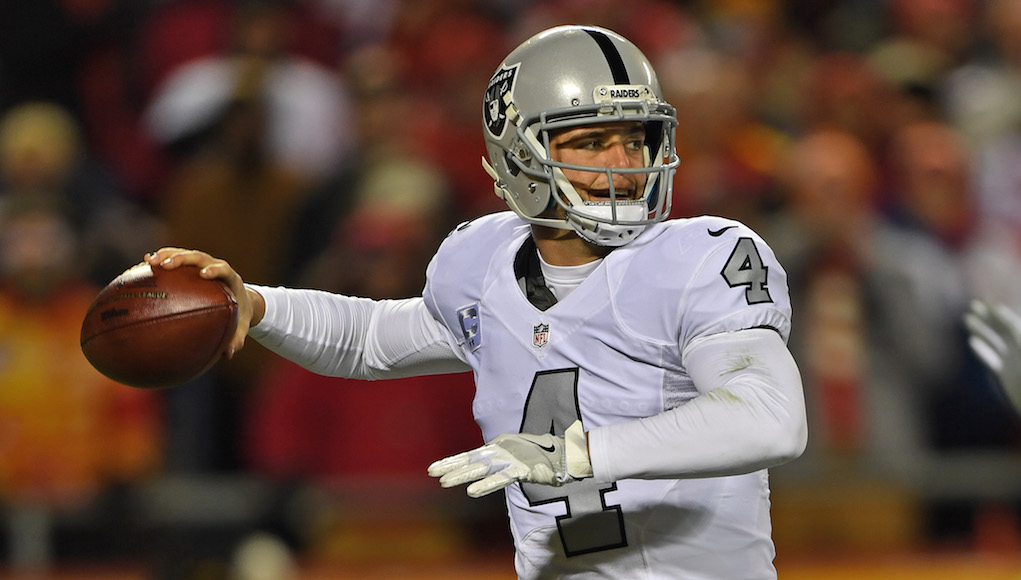
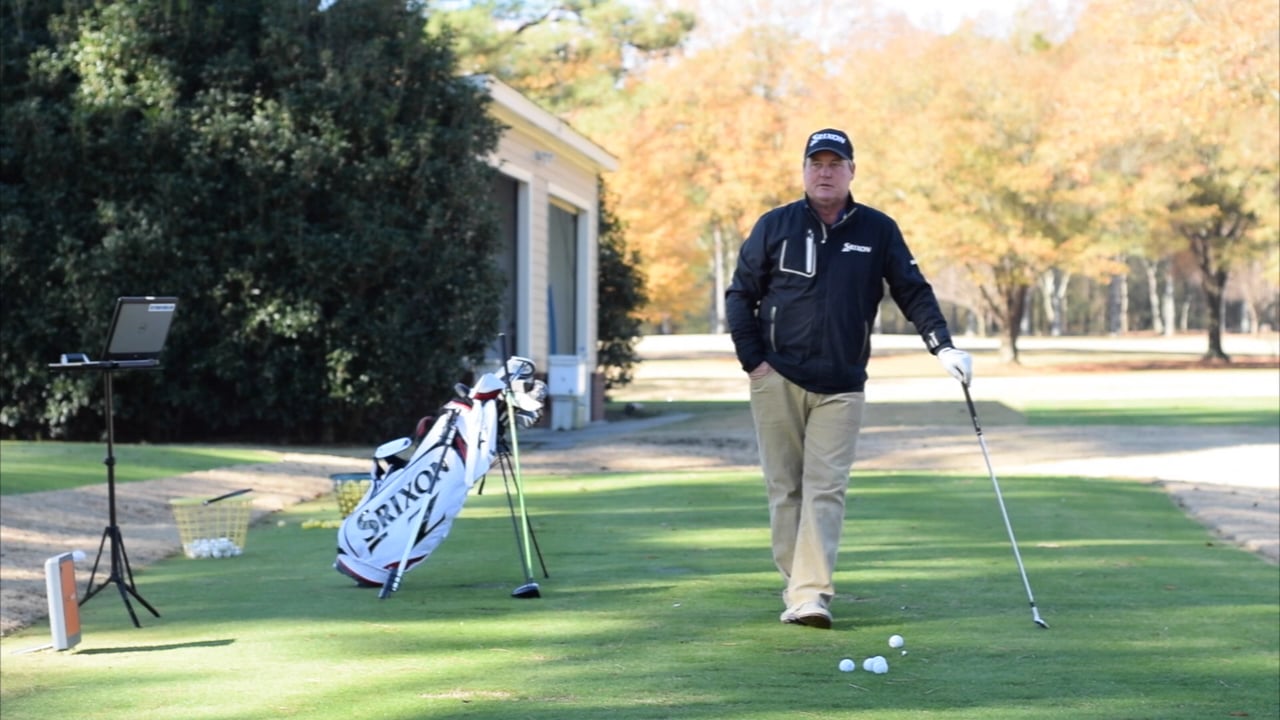
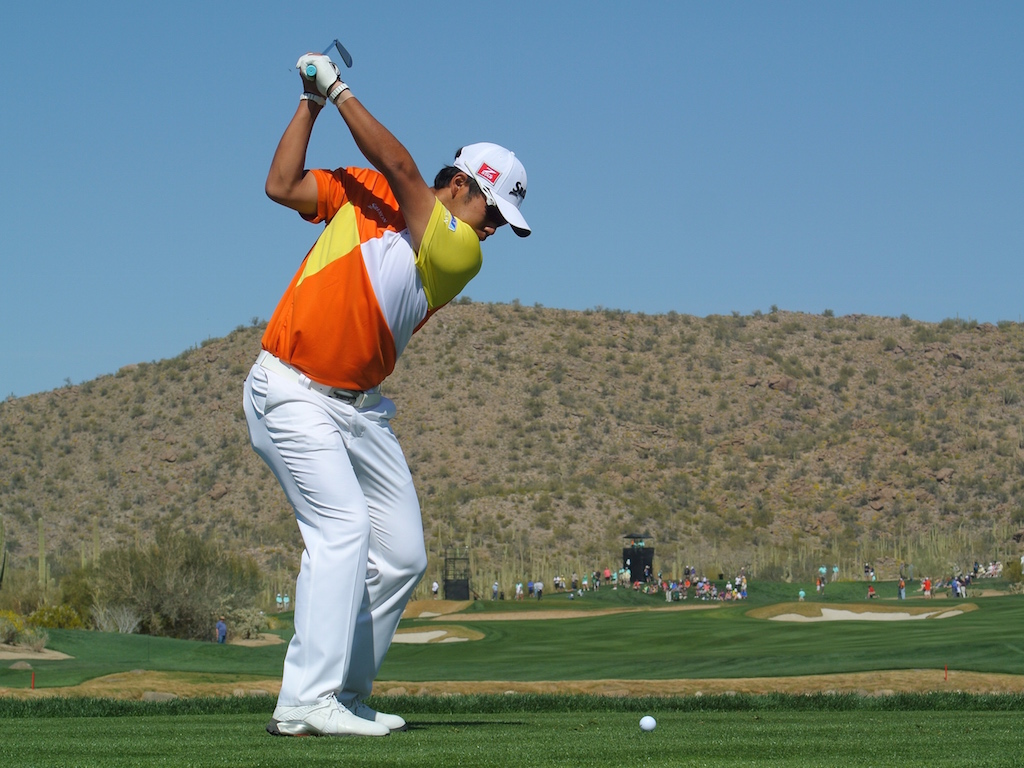









Pingback: Gadgets for Golf - Gifts and Gadgets - Welcome
Jeff
Jan 15, 2015 at 12:25 am
Your pictures are incorrect it seems. In the normal swing your shots are between 260-280. Carry 267 Total 287. However in your conclusion you say the normal shots are around 248. Check your pictures again as it seems for you a normal swing is much much better than the others. Just looking out…
Tom Stickney
Jan 14, 2015 at 3:08 pm
Great thoughts bob.
Bob
Jan 14, 2015 at 10:26 am
When you pound a nail with a hammer, you take the hammer back only so far. Farther than that, you subconsciously lose the feel for being sure the hammer will strike the nail accurately, or at all. It’s the same with a golf club. There’s a point in the backswing beyond which you subconsciously lose the connection between the clubface and the golf ball. Then you’re left with trying to find the ball again on the way down. Feeling that point of farthest connection is how you determine the length of your backswing. It’s a slightly different length for every club and every shot, but it’s a consistent feeling. Become sensitive to it and you never go wrong.
Ryan K
Jan 14, 2015 at 8:25 pm
Great analogy
Swingblade
Jan 16, 2015 at 2:49 pm
Ditto…
other paul
Jan 13, 2015 at 10:48 pm
Good article Tom. I think you should take some of your own advice from one of your earlier articles (unless you did already…). You said that if people want to swing faster they should take Jaacob Boudens (I think i spelled his name wrong, oops) swing speed program. I am working on it for about two weeks and have gained 11 yards (260->271 average, longest 280->290). Then you would be as fast a swinger as all the other wrxers ????
Tom Stickney
Jan 13, 2015 at 10:07 pm
Super- thx
Tom Stickney
Jan 13, 2015 at 10:06 pm
Christian– check out dan pohl from the tour in the 80’s
christian
Jan 13, 2015 at 9:43 pm
I hit it further than anybody I know or play with, but I have a really short backswing, much shorter than even the one you demonstrate here. Are there any real long hitters with short backswings? Like on the Long Drive tour?
Daniel
Jan 14, 2015 at 9:36 am
JB Holmes has a very short backswing and is one of the longest on PGA Tour
Josh
Jan 14, 2015 at 9:50 am
JP Holmes?
Shane
Mar 12, 2015 at 11:53 am
Look for YouTube videos of Alvaro Quiros. He’s a prime example of exemplary technique in a tall man who has a very short swing and highly aggressive hip turn. You will also notice the balance and poise throughout his swing which is essential regardless of swing length. Hope this helps 🙂
Supermangolf
Jan 13, 2015 at 4:50 pm
Loved this article, I have been struggling a lot with the length and tempo of my back swing as it has gotten Very quick and short. Accuracy has been good but the drop in distance has hurt my game more than the added benefit.
Any drills you can think of to length my swing just a little bit; when I try to consciously do it, I feel like when I push past my current point I spin out and get out of rhythm.
Chip
Jan 13, 2015 at 4:35 pm
Great article. I find that when my swing gets too long that my shoulders don’t turn anymore than usual. My arms get disconnected and inefficient. Therefore, when I make what I feel like is a 1/2 swing, it is actually a normal length backswing and I don’t lose any ball speed, trajectory gets lower, plus I am more consistent.
tom stickney
Jan 13, 2015 at 3:59 pm
Chris and Ca…yes for most people, but as little as I play I prefer a touch more control
Chris
Jan 13, 2015 at 10:09 pm
Perfect…thanks for the reply! Great article!
tom stickney
Jan 13, 2015 at 3:59 pm
Thanks marty
tom stickney
Jan 13, 2015 at 3:58 pm
Snow– of course they do
tom stickney
Jan 13, 2015 at 3:58 pm
Not– The Tour Average speed is 113…I think I am doing fine based on the small amount that I play
tom stickney
Jan 13, 2015 at 3:56 pm
SMRT– If you looked deeper at my article you might understand more than what you gleaned from your initial two minutes…
tom stickney
Jan 13, 2015 at 3:55 pm
Farmer- You’ll have to work hard as you get older so that it does not get too short
tom stickney
Jan 13, 2015 at 3:55 pm
Keith–
thanks
tom stickney
Jan 13, 2015 at 3:54 pm
Robert– you must do what works best for you for sure!
tom stickney
Jan 13, 2015 at 3:54 pm
Kevin– It is the same
tom stickney
Jan 13, 2015 at 3:53 pm
Chris– I would unless the dispersion is too wide
Kevin Park
Jan 13, 2015 at 1:52 pm
how come the initial data presented for a normal swing does not match the data in the summary chart?
Robert
Jan 13, 2015 at 1:51 pm
It’s also harder to make solid contact more consistently when taking the club further back. So you have to take that into account. I found that taking the club back shorter, but getting a tighter torque in my legs and hips ended up producing the same distance with a tighter dispersion and I hit is solid more consistently. However, one of the reasons this is happening is with this swing there is a slight delofting of the club at impact. So it’s a lower ballflight swing, same distance, more consistency. Works for me.
Keith
Jan 13, 2015 at 1:37 pm
Very helpful, thank you!
farmer
Jan 13, 2015 at 1:22 pm
I used to have a pretty long backswing. Age and some physical problems have made it a short backswing. If I had always been short, where would I be now?
SMRT
Jan 13, 2015 at 1:13 pm
So lengthen your back swing until you start spraying it… Too bad I can’t get the last two minutes of my life back.
not impressed
Jan 13, 2015 at 1:09 pm
Are those your actual driver figures Tom? Seems to me a big man like yourself who is so knowledgeable about the golf swing would be able to find some more club head speed.
snowman
Jan 13, 2015 at 3:13 pm
yes Tom, don’t you know everyone on Golfwrx swings the Driver 120mph with an average carry of 350 yards?
MartyMoose
Jan 13, 2015 at 12:31 pm
Good timing on this. I actually just shortened my backswing. It feels like a 3/4 swing now but I believe it is closer to a full swing as my swing was probably 5/4 before. I’m swinging smoother now, better contact, better trajectory and adding about 5 yards of distance to each iron. Shoulders should dictate backswing length.
Alex
Jan 13, 2015 at 12:02 pm
Just a small typo in the data provided. The speeds should be listed as MPH, not yards 🙂
Otherwise, nice article!
Zak Kozuchowski
Jan 13, 2015 at 12:10 pm
Thanks for the help, Alex.
Chris Nickel
Jan 13, 2015 at 11:58 am
Question…so if you’re getting basically the same dispersion in the normal and long swings…but greater carry in the long one, why wouldn’t you advocate for that??
ca1879
Jan 13, 2015 at 12:10 pm
My thought exactly. The distance gain was easily worth the slight increase in dispersion.
GMR
Jan 15, 2015 at 3:49 am
Particularly since you can always club down to tighten the dispersion when you are hitting the ball 20 yards further…